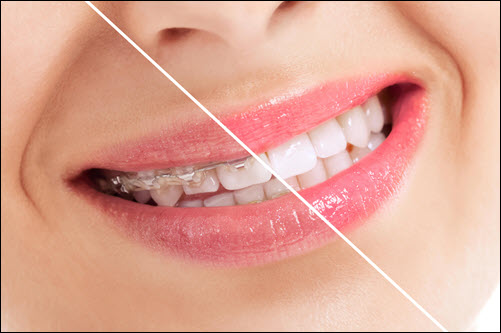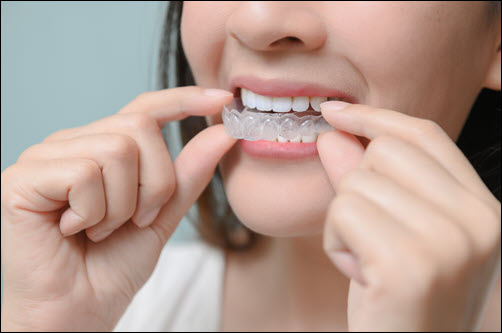Invisalign® and traditional metallic braces are both popular orthodontic treatments designed to straighten teeth and correct dental issues. While they share the same goal, there are distinct differences between the two treatments that patients should consider when choosing the right option for their needs. If you’re unfamiliar with Invisalign, here’s what you should know.
 Appearance:
Appearance:
One of the most noticeable differences is the appearance. Traditional metal braces consist of metal brackets and wires that are visible on the teeth. In contrast, Invisalign utilizes a series of clear, removable aligners that are virtually invisible when worn. This makes Invisalign a more aesthetically appealing option for individuals who prefer a discreet treatment.
Comfort:
In terms of comfort, Invisalign aligners generally cause less discomfort and irritation compared to metal braces. The aligners are custom-made to fit snugly over the teeth, with smooth edges that do not cause irritation to the mouth. Metal braces, on the other hand, may cause discomfort and soreness due to the presence of brackets and wires.
 Removability:
Removability:
Invisalign aligners are removable, allowing patients to take them out when eating, drinking, brushing, and flossing. This makes maintaining oral hygiene easier and provides more freedom in terms of diet. On the contrary, traditional metal braces are fixed appliances that cannot be removed by the patient. Special care must be taken to clean around the brackets and wires, and certain foods may need to be avoided to prevent damage.
Treatment Duration:
The treatment duration can vary depending on the complexity of the case. In general, traditional braces tend to have a longer treatment duration compared to Invisalign. The progress of Invisalign treatment is guided by a series of aligners that are changed every few weeks, gradually shifting the teeth into the desired positions. Metal braces typically require adjustments by the orthodontist every few weeks to tighten the wires and advance the treatment.
Effectiveness:
Both Invisalign and traditional braces are effective at achieving teeth straightening and correcting various dental issues. However, traditional braces may be more suitable for complex cases, such as severe misalignments or bite issues. Invisalign is better suited for mild to moderate cases, including crowded teeth, gaps, and minor bite issues.
Cost:
The cost of treatment can vary depending on factors such as the location, the severity of the case, and the treatment duration. In general, Invisalign tends to be more expensive than traditional braces. It is advisable to consult with an orthodontist to determine the specific cost implications for each treatment option.
In conclusion, both Invisalign and traditional metal braces have their own advantages and considerations. Invisalign offers a more discreet appearance, greater comfort, and the convenience of removability. Traditional braces are generally more effective for complex cases and may be more cost-effective. It is essential to consult with an orthodontist to evaluate your specific dental needs and determine the most suitable treatment option for you. If you decide that Invisalign is the right choice for you, schedule an appointment with Linglestown Family Dental.


